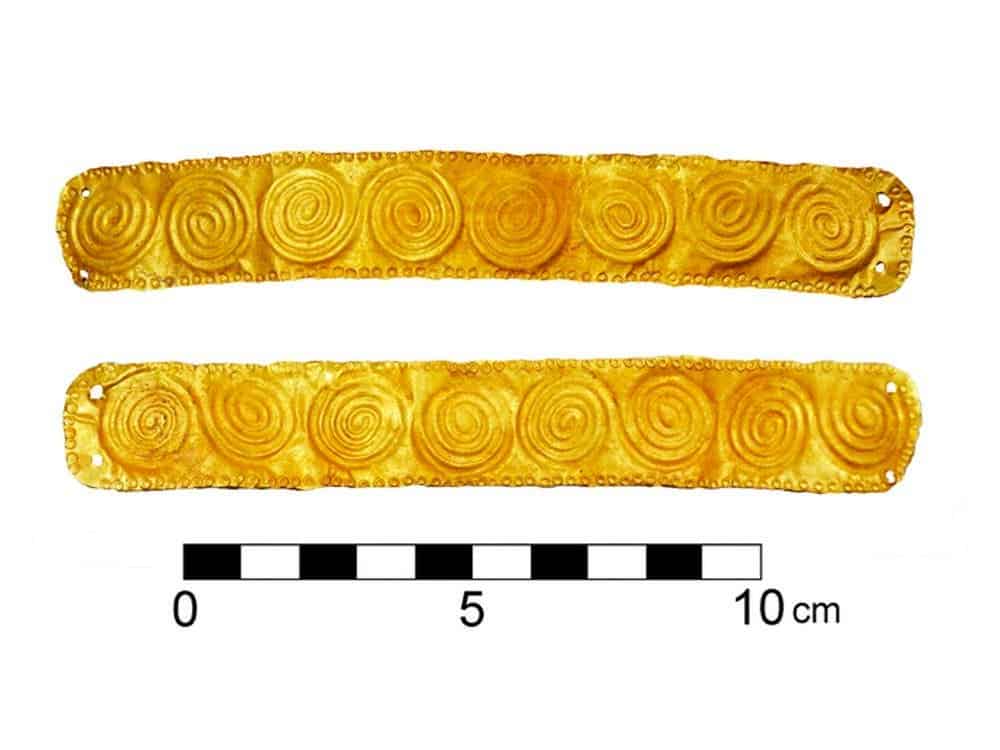In 2018, archaeologists at the New Swedish Cyprus Expedition struck gold — quite literally. They discovered two Bronze Age tombs, both underground chambers, in the ancient city of Hala Sultan Tekke. Hala Sultan Teke is a mosque and tekke complex in the capital of Cyprus, Larnaca, built on one of the largest Bronze Age archaeological sites. Based on these new findings, the site may be even more important than previously thought.

The excavations were made by researchers from the University of Gothenburg in Sweden as part of the “New Swedish Expedition” which started in 2010. The team discovered burial chambers that must have belonged to a family (or families) of great wealth. Overall, the research team found 150 human remains and over 500 funeral goods, including many pieces containing gold and jewelry. The remains were placed one over the other, suggesting that the burial chamber would have been used for multiple generations. Most likely, it was the mausoleum of the city’s rulers.
“The finds indicate that these are family tombs for the ruling elite in the city,” excavation leader Peter Fischer, professor emeritus of historical studies at the University of Gothenburg in Sweden, said in a statement.
“For example, we found the skeleton of a 5-year-old with a gold necklace, gold earrings and a gold tiara. This was probably a child of a powerful and wealthy family.”

It’s pretty obvious that for the family, the mausoleum had a significant importance. It wasn’t just a simple burial chamber, it also served a ceremonial role. Testament to this is a particular artifact uncovered inside.
“We also found a ceramic bull,” Fischer said. “The body of this hollow bull has two openings: one on the back to fill it with a liquid, likely wine, and one at the nose to drink from. Apparently, they had feasts in the chamber to honor their dead.”
As if the jewelry pieces weren’t remarkable enough, upon closer analysis, archaeologists found that they belong to different cultures. For instance, there is a blue lapis lazuli gemstone from Afghanistan, a red carnelian gemstone from India, and amber from around the Baltic Sea — valuables from the trade partners of the kingdom at the time. Another notable find is a cylinder-shaped seal made of a mineral called hematite and inscribed in cuneiform, the written language of ancient Mesopotamia. The cuneiform text mentions three names: two historical kings (father and son) from the 18th century BC, as well as Amurru, a god worshipped in the Akkadian and Sumerian kingdoms. “We are currently trying to determine why the seal ended up in Cyprus more than 1000 kilometres from where it was made,” the researchers said in a statement.
For historians, the ceramics discovered at the same are almost as important as the jewels themselves, because they offer valuable cultural information.
“The way that the ceramics changed in appearance and material over time allows us to date them and study the connections these people had with the surrounding world. What fascinates me most is the wide-ranging network of contacts they had 3,400 years ago,” Fischer explains.

All of the objects from the excavation that have been processed and studied are stored in museums in Nicosia and Larnaca in Cyprus.
Now, the next step for researchers is to carry out genetic analysis on the remains discovered there and piece together as much as possible about this dynasty.
“This will reveal how the different individuals are related with each other and if there are immigrants from other cultures, which isn’t unlikely considering the vast trade networks,” says Peter Fischer.







